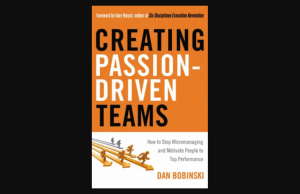The COVID-19 pandemic forced nonprofits leaders to pivot. That doesn’t mean mission changed. It just put a burner under the digital innovation currently pushing fundraisers.
According to influencer and author Eric Ries, the pandemic incited a pivot, “a change in strategy without a change in vision.” An examination of fundraising trends showed him to be correct.
Pivoting was not unique to the United States. Daryl Upsall FCIOF, president of Daryl Upsall International, presented a worldwide view of innovation implementation during a presentation titled “Challenges and Opportunities: Trends and Innovations Impacting Fundraising Worldwide,” during the Association of Fundraising Professionals international event AFPICON in New Orleans.
“Working across some 80 countries and with the some of the biggest international UN agencies and INGOs, as well as many national nonprofits, we saw that those organizations that pivoted, their fundraising and donor care budgets grew enormously during COVID and came out fitter and stronger afterwards,” said Upsall.
Many international nonprofit organizations (INPOs) grew income more than 20% during 2020 and 2021, despite COVID-19. Leaders ramped up fundraising, especially in digital/social media, direct response television, donor loyalty and conversion of one-off to monthly gifts, upgrading monthly donors, investing heavily in legacy marketing, and flipping in-person fundraising events to virtual/online happenings.
The pandemic just might be a dress rehearsal for the future, according to Upsall. You won’t be able to hide. It will require nonprofit managers to act fast and decisively, starting with the board. Members should focus on business continuity, having system in the cloud.
Fundraisers already know that regular, committed, sustainer giving is vital during a crisis. That should be ramped up in advance of the next crisis. You need to recognize and listen to your donors, give supporters choice. Communicating your organization’s impact is vital, as is all forms of social and digital media.
The image of gamers is young people willing to go 24-hours without sleep fueled with caffeinated everything. Fundraisers need to get involved with digital gaming because the percentage of gamers aged 55 to 64 grew by 32% during the past two years, according to data from the Global Games Marketing Report and cited by Upsall. This age group includes some of your best future donors.
“Whilst all fundraising organizations need to engage with younger generations, it is still those that are 55+ that have the financial capacity and potential to become long term regular/sustainer donors,” said Upsall. “The mistake many (younger) fundraisers make it they have an image of us 60+s in retirement homes, whereas we are out there travelling, actively engaged in sports, attending music concerts, posting on social media ….and are many are gamers. Play to win and seek out these valuable donors where they are living their lives.”
Other digital elements fundraisers need to embrace, he said, include digital wallets, cryptocurrencies, non-fungible tokens, peer-driven giving, Apps for donations, live stream events and embedded video content.
When thinking to the future, Upsall reminded attendees of the comment from fundraising guru Ken Burnett who said: “All fundraising atrophies over time. The key is to invest not just in innovation but in inspiration. You can copy the innovators, but if you do it without genuine inspiration you’ll fail.”








